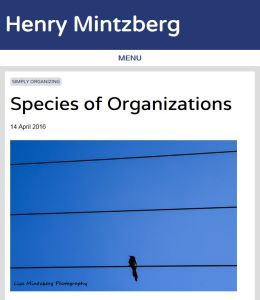Join getAbstract to access the summary!

Join getAbstract to access the summary!
Henry Mintzberg
Species of Organizations
Henry Mintzberg, 2016
What's inside?
Before you make your next business decision, know what kind of organization is involved.
Recommendation
While it is possible to classify animals by their species, the vocabulary available to describe companies, on the other hand, is more “primitive.” Renowned management and strategy expert Henry Mintzberg makes a compelling argument for the use of a new classification structure when describing businesses. He introduces four “species of organizations” and describes their defining traits. getAbstract recommends this article to students, managers, consultants and entrepreneurs looking for a new way to frame the discussion around organizational structure.
Summary
About the Author
Henry Mintzberg is a professor of management studies at McGill University in Montreal. He is the author of Managers Not MBAs, Tracking Strategies, Simply Managing and Rebalancing Society.























Comment on this summary